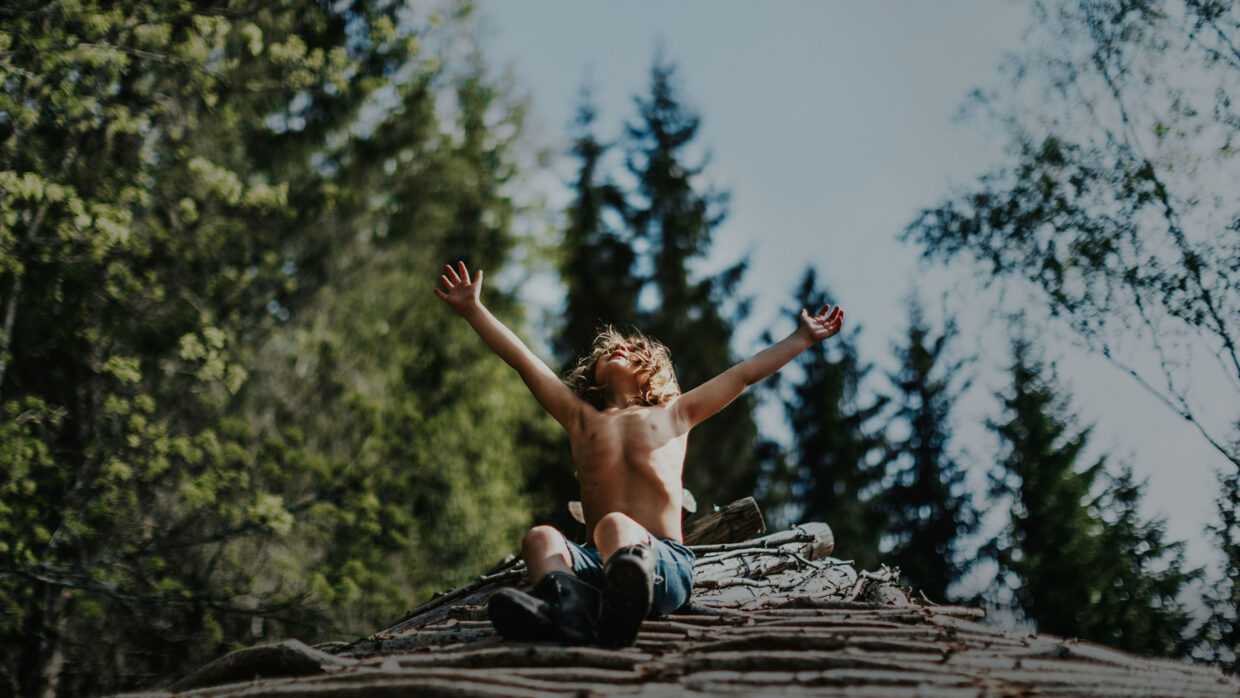 Back to selection
Back to selection
“Me Being There by Myself Led to More Authentic and Intimate Situations”: DP Silje Evensmo Jacobsen on A New Kind of Wilderness
 A New Kind of Wilderness Photo by Maria Gros Vatne.
A New Kind of Wilderness Photo by Maria Gros Vatne. Director Silje Evensmo Jacobsen also served as the primary cinematographer on her documentary A New Kind of Wilderness, premiering at the 2024 Sundance Film Festival in the World Documentary Competition. The film follows the Payne family, who’ve been happily residing in a remote Norwegian forest until a death in the family forces them to move back into populated society.
Below, Evensmo Jacobsen describes her approach to shooting A New Kind of Wilderness, which she did alongside directing in order to foster a more genuine intimacy with the film’s subjects.
Filmmaker: How and why did you wind up being the cinematographer of your film? What were the factors and attributes that led to your being hired for this job?
Evensmo Jacobsen: I am the main cinematographer and the director for the film, but I also had several cinematographers involved shooting more complex situations where I needed to be focused with the directing (and sound). There are two main reasons why I was shooting a lot by myself. The first is the most boring answer: I started to shoot without any funding, so it was the only option in the beginning. Second, I realized that in intimate moments it was better to be alone with the camera with [the subjects], than to have a crew with me. The family knew me well and me being there by myself led to more authentic and intimate situations than if I brought a bigger crew, or just one more person, to the setting.
Filmmaker: What were your artistic goals on this film, and how did you realize them? How did you want your cinematography to enhance the film’s storytelling and treatment of its characters?
Evensmo Jacobsen: My shooting process involves a mix of planned set-ups and spontaneous captures that just feel right in the moment. I’ve got some clear ideas in my head, but I’m also all about those unexpected, natural scenes that unfold. So often I just spent time with them being open for what to come.
My plan from the beginning was to use Maria’s photos and stories from her blog as the backbone for the film’s structure, connecting her stories and photos to each child’s present experiences. I also had this in mind shooting, always looking for situations that could be linked to her past stories and photos.
Filmmaker: Were there any specific influences on your cinematography, whether they be other films, or visual art, of photography, or something else?
Evensmo Jacobsen: As I mentioned earlier, I was really inspired by Marias blog, but I wanted my shooting and scenes from them in present time to be in contrast to the past, and her photos and style. They continued their life without her, and I wanted this also to be a contrast to the past in the visual material. I also wanted her style to be hers and not something I tried to adapt.
Filmmaker: What were the biggest challenges posed by production to those goals?
Evensmo Jacobsen: When I was shooting the children in their intuitive way in low sun in nature, it’s basically impossible not to get beautiful and good shots. So, after filming them a couple of times I just decided that I had to capture the mood and light in the situation, not pushing the visuals in a direction that weren’t naturally there. Which also made it easier to take what came more openly, not forcing it into a planned visual style.
Filmmaker: What camera did you shoot on? Why did you choose the camera that you did? What lenses did you use?
Evensmo Jacobsen: I started with a Sony FS7, because that was the camera I had available. Later we changed to Sony FX6. Most of the time I used the Sony FE 24-70mm f/2.8 GM. The Sony FX6 is a good and quite small camera, flexible with lightning and easy to maneuver. It is also great to have the possibility to use the auto focus when you are a director filming by yourself.
Filmmaker: Describe your approach to lighting.
Evensmo Jacobsen: I am all about using the natural light when it comes to documentary shooting. Of course, it can be too dark sometimes, especially in the wintertime in Norway. But my experience is that to get intimate, authentic scenes that don’t seem staged, you need to be there in the moment, being as invisible as you can and not interfering too much with technical issues.
Filmmaker: What was the most difficult scene to realize and why? And how did you do it?
Evensmo Jacobsen: Being alone with them when they were several people with one camera was challenging. Since I followed more than one character, I wanted to shoot from different angels at the same time, but that was obviously not possible. I decided to be determined on who was the main character in the scene and just prioritizing following that person close.
Filmmaker: Finally, describe the finishing of the film. How much of your look was “baked in” versus realized in the DI?
Evensmo Jacobsen: I was also in the edit, so my style came out all the way.
TECH BOX
Film Title: A New Kind of Wilderness
Camera: Sony FS7 and Sony FX6
Lenses: Mostly Sony FE 24-70mm f/2.8 GM
Lighting: None
